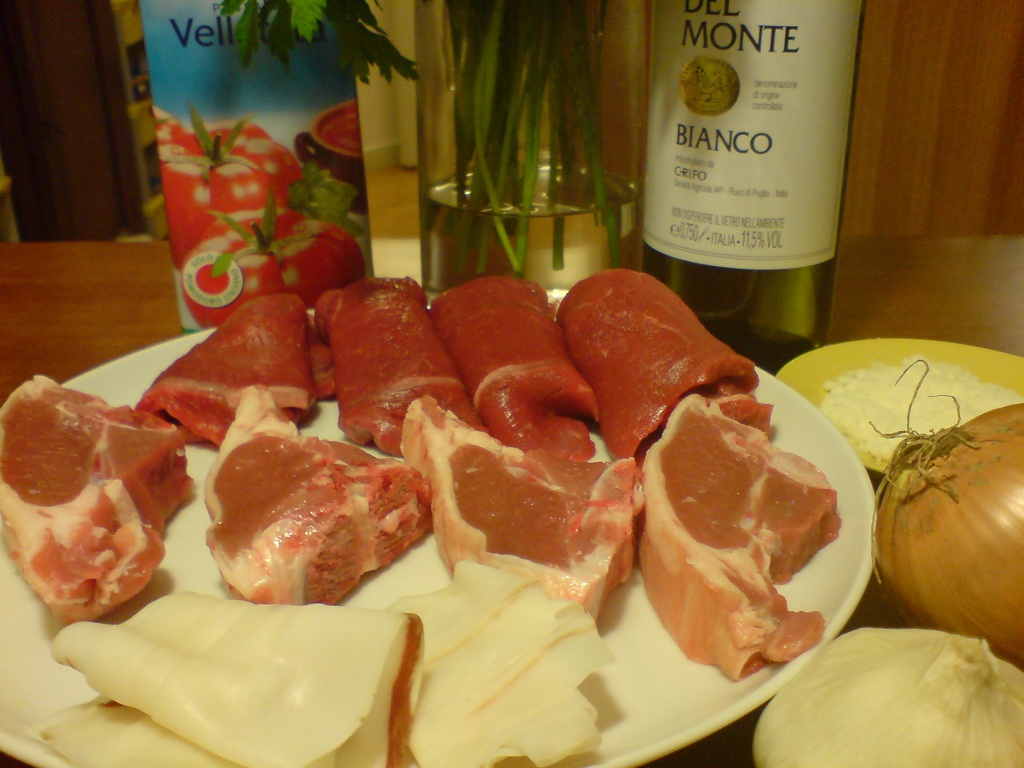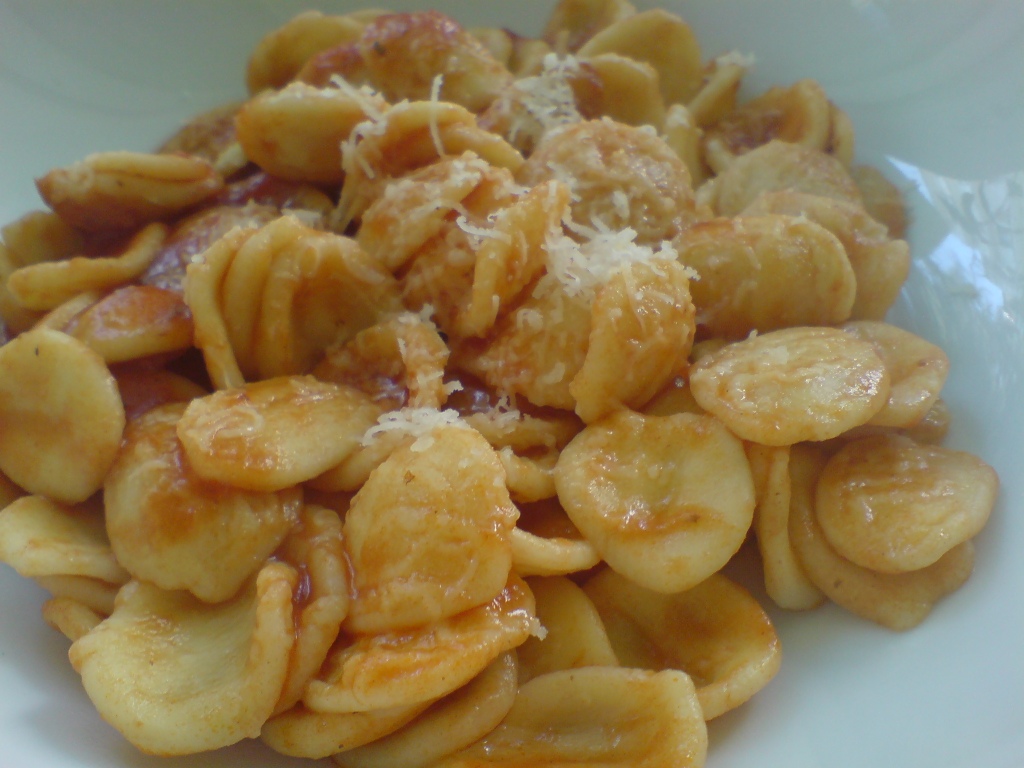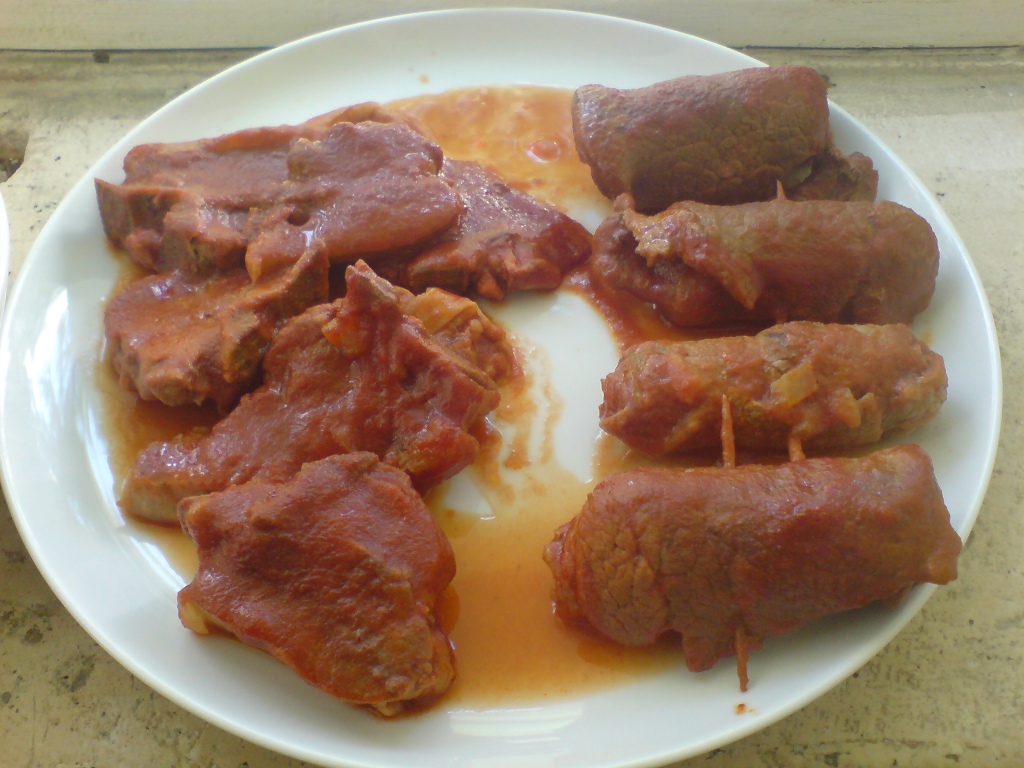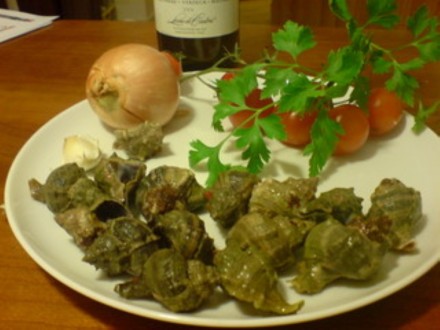 From Bergamo. Polenta e cüní. This is the most common Sunday lunch in Bergamo, and is one of the dishes I miss from my time living there. The are many variations on the recipe. This one comes from Slow Food Italy. Serves 4
From Bergamo. Polenta e cüní. This is the most common Sunday lunch in Bergamo, and is one of the dishes I miss from my time living there. The are many variations on the recipe. This one comes from Slow Food Italy. Serves 4
- 1 rabbit, cut into portions
- 50g lardo, guanciale or fatty pancetta
- 100g butter
- 2 glasses of dry white wine (Slow Food recommends Valcalepio)
- 4 sage leaves
- 1 sprig of rosemary
- 1 clove
Put the rabbit in a pan large enough to contain it in a single layer. Place over a high heat for a few minutes to completely dry out the pieces.
Reduce the heat a little and add the lardo, butter, clove and sage. Brown the meat.
Add the wine and let it evaporate, stirring from time to time.
Reduce the heat to low, cover and continue cooking until the rabbit is tender. There shouldn’t be a lot of liquid while it’s cooking, but if it looks like drying out, add a little stock. The cooking time will vary according to the rabbit, but it will be at least two hours, maybe longer.
About five minutes from the end of cooking, add the remaining butter and the chopped rosemary. The rabbit should be quite dry, almost crispy on the outside, and moist on the inside.
Serve it with polenta made according to the instructions on the packet. If I don’t have a polenta machine available to stir it, I usually use the quick cooking variety. A lot of Bergamasci regard this as a heinous crime though 🙂

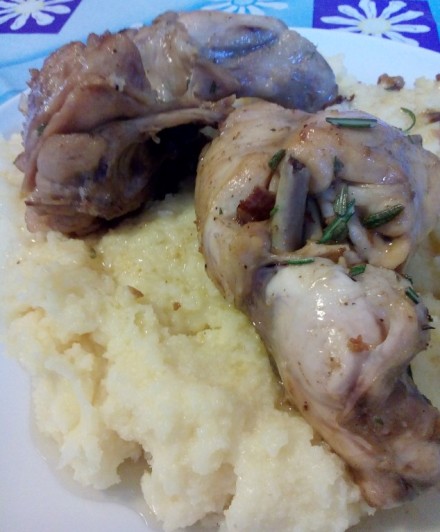
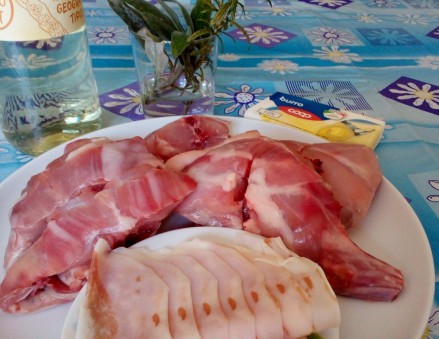
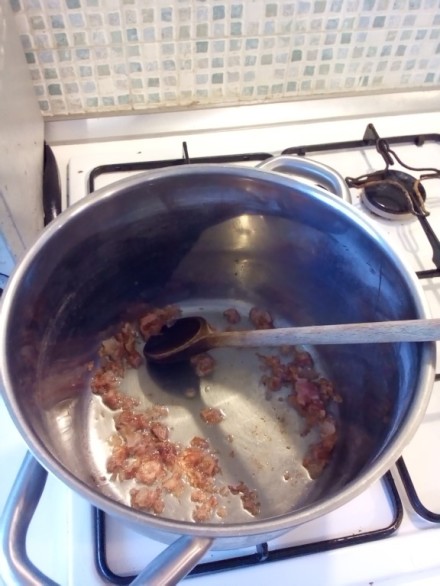



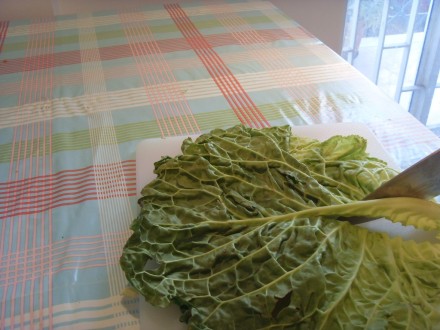


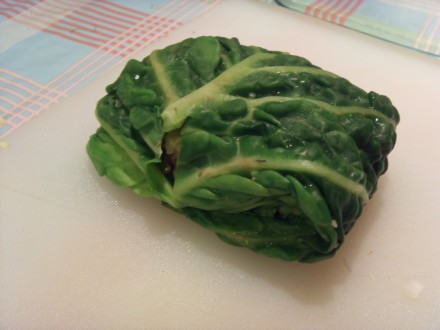






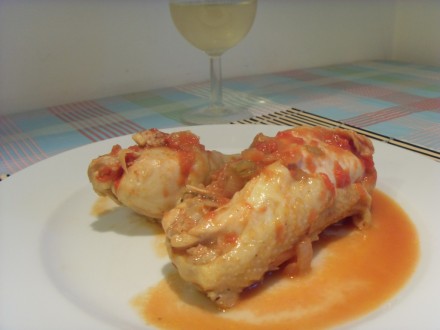



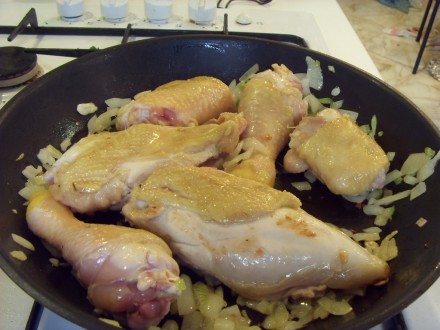


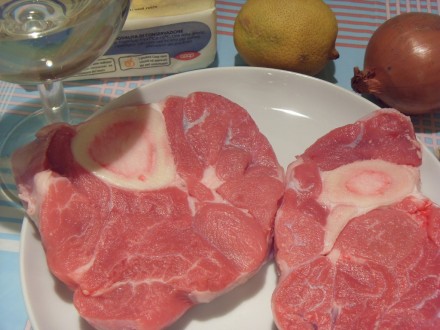
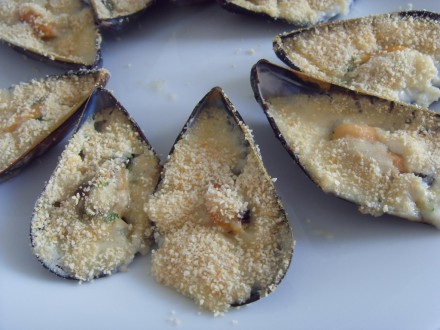

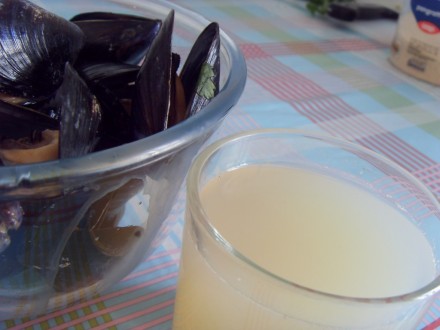


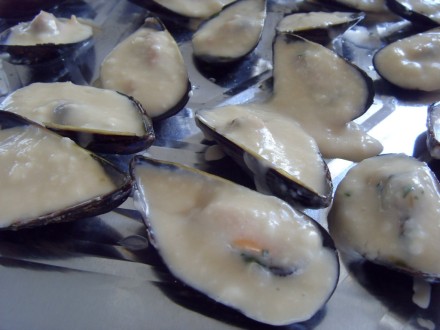
 Alici arraganate. From Puglia. There is probably not much chance of finding fresh anchovies in the UK, but if you do, this is a good recipe to try. It takes a fair bit of preparation, but it’s worth it in the end. You need to clean them as soon as you get them home as they will spoil extremely quickly. Do not do as I did this morning and leave yourself 30 minutes to clean a couple of hundred anchovies before you have to go to work 🙂 To clean them, snap the back bone just behind the head and pull. The guts should come out with the head. If you can’t get the hang of that, use a small sharp knife to cut through the back bone, taking care not to cut all the way through and pull. Next remove the backbone by running your thumb along the spine of the fish, flattening it out into two fillets. The backbone should then be easy to pull out. “Close” the fillets by folding them along the line of the backbone. The recipe says this will feed 4 as an antipasto, but it would feed at least that number as a British style starter.
Alici arraganate. From Puglia. There is probably not much chance of finding fresh anchovies in the UK, but if you do, this is a good recipe to try. It takes a fair bit of preparation, but it’s worth it in the end. You need to clean them as soon as you get them home as they will spoil extremely quickly. Do not do as I did this morning and leave yourself 30 minutes to clean a couple of hundred anchovies before you have to go to work 🙂 To clean them, snap the back bone just behind the head and pull. The guts should come out with the head. If you can’t get the hang of that, use a small sharp knife to cut through the back bone, taking care not to cut all the way through and pull. Next remove the backbone by running your thumb along the spine of the fish, flattening it out into two fillets. The backbone should then be easy to pull out. “Close” the fillets by folding them along the line of the backbone. The recipe says this will feed 4 as an antipasto, but it would feed at least that number as a British style starter.

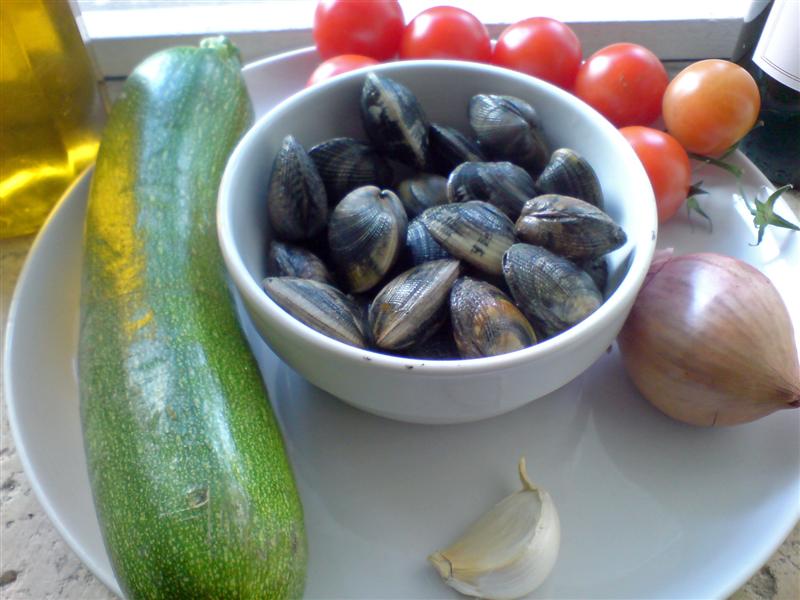
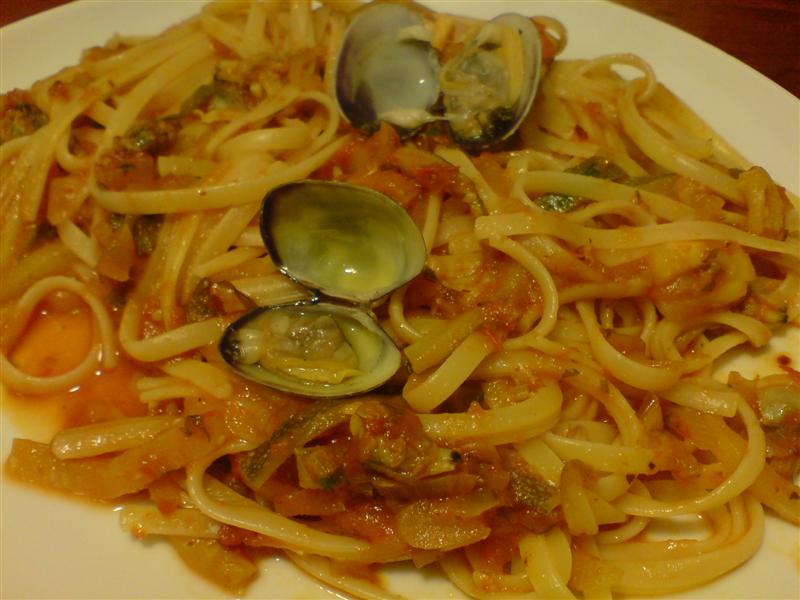
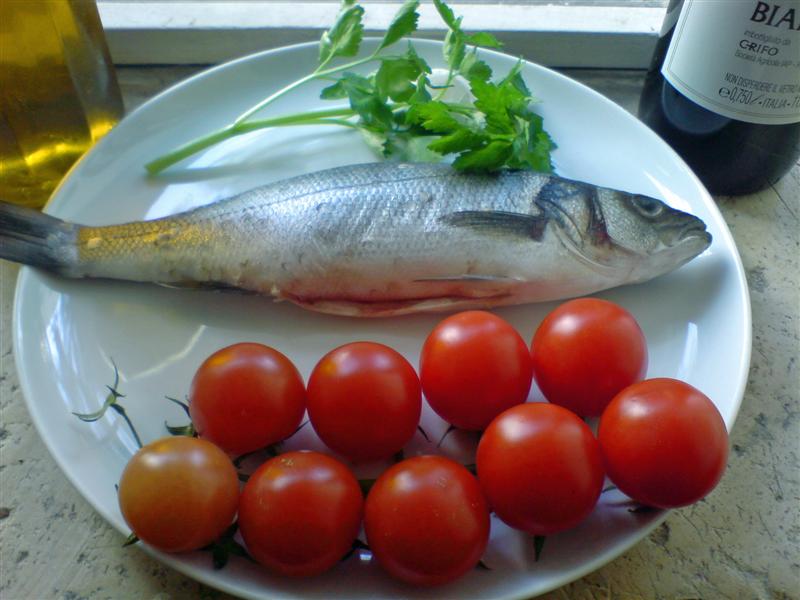








 This is another recipe from Tiziana (many thanks). This one of the most common ‘Sunday lunches’ in Bari. I think it’s known as “Sunday gravy” in the Sates. The recipe doesn’t give very precise measurements as it depends how many people you are cooking for and your personal taste. As a rough guide allow 2-300g of meat per person. Tiziana usually serves the ragu with orecchiette, but you can use your favourite pasta. Serve the meat separately as the second course.
This is another recipe from Tiziana (many thanks). This one of the most common ‘Sunday lunches’ in Bari. I think it’s known as “Sunday gravy” in the Sates. The recipe doesn’t give very precise measurements as it depends how many people you are cooking for and your personal taste. As a rough guide allow 2-300g of meat per person. Tiziana usually serves the ragu with orecchiette, but you can use your favourite pasta. Serve the meat separately as the second course.